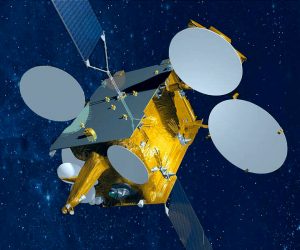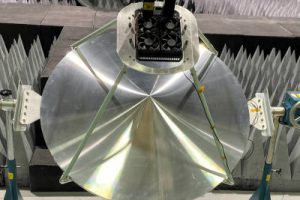
It operates the European Data Relay System (EDRS) – two payloads, on two different satellites, which communicate with a constellation of low earth orbit planet-monitoring satellites called Sentinels.
Currently Sentinel-EDRS communication is by laser and the EDRS-Earth downlink is radio.
“The challenge is that the growing amount of information from LEO and geostationary satellites and from satellite constellations will mean that the available bandwidth from radio communication links will soon be too low to meet ESA’s data transfer needs,” according to Yokogawa, which is providing test equipment for a laser-based Earth link replacement.
That said, the experiment here is from Earth up to an EDRS package.
Free-space optical signals transmitted between the Earth and space cannot be screened from interference due to clouds and other weather phenomena so, to achieve a sufficient signal-to-noise ratio, very narrow-band optical signals are needed, according to Yokogawa.
“In the ESA’s EDRS, signals are transmitted at a precisely specified infrared wavelength of 1,064.625nm ±0.011nm, with almost zero variance in the peak wavelength,” it said. “This allows the receiver to lock on to the transmitted narrowband signal and to eliminate interfering signals. The EDRS satellite can operate even when the sun is in its line-of-sight.”
ESA is setting up optical ground stations on Tenerife and the Chelmos observatory in the Greek Peloponnese.
The Chelmos transmit laser is pumped by an 808nm laser diode to generate its 1,065nm, with precise tuning by adjusting transmitter laser temperature.
“EDRS operates at multiples of THz and the transmitter and receiver wavelengths are no more than 28GHz apart,” said EAS optical comms manager Zoran Sodnik. “This means that the laser’s frequency has to be set with GHz precision, and then measured with the same level of precision and accuracy.”
 Working with Netherlands-based company Simac Electronics, ESA selected the 900 – 1,700nm version of Yokogawa’s AQ6151B optical wavelength meter, which uses a Michelson interferometer and is specified accurate to ±200 parts per billion. (Ed: erroneously stated by Electronics Weekly as ±2 parts per billion in earlier version of this article).
Working with Netherlands-based company Simac Electronics, ESA selected the 900 – 1,700nm version of Yokogawa’s AQ6151B optical wavelength meter, which uses a Michelson interferometer and is specified accurate to ±200 parts per billion. (Ed: erroneously stated by Electronics Weekly as ±2 parts per billion in earlier version of this article).
For the price of your contact details, you can request more information on the above from this Yokogawa web page.
Two satellites carry EDRS payloads:
- EUTELSAT 9B (Top image – copied from Eutelsat website – if this use is inappropriate, please contact Electronics Weekly so that it can be removed)
- EDRS-C/HYLAS-3 (name varies depending on source) – An ESA satellite that also carries Avanti Communications’ Hylas-3 commercial comms package
 Electronics Weekly Electronics Design & Components Tech News
Electronics Weekly Electronics Design & Components Tech News



